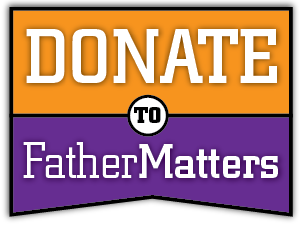November Financial Matters – Stuart Burns
First I would like to wish you and your families a wonderful thanksgiving and holiday season. Through this year we have discussed topics like budgeting, rebuilding credit and other areas of finances so that you can be equipped to make better financial decisions. We all do need some level of support to pay necessities. But, at the end of the day even if your financial situation looks bleak and you are struggling to make ends meet – it can and will turnaround with some effort. Money in itself never has and never will bring happiness so take this opportunity to look at some of the things in your life that you are thankful. We all can find something this time of year to give thanks!
What’s the real cost of this purchase?
We are going to dive in now and discuss how you can prepare for the “Real” costs behind some of our financial decisions. If you buy a car, a house or things on credit there will be additional costs involved then just the simple price of the purchase. I am going to use a car purchase as the main example;
First thing we need to do is figure out our budget.
On average, people spend about fourteen to sixteen percent of their annual income, before taxes, on their transportation budget. That’s a figure that includes all the expenses of owning a car—not just your car payments, but your gas, insurance, maintenance and repairs, and everything else as well.
Let’s use an example of what this budget might look like for an annual income of forty two thousand dollars.
To figure out your budget, we’ll take sixteen percent of forty two thousand. That gives you six thousand seven hundred twenty dollars a year to spend on your car, or five hundred sixty dollars a month.
Now let’s look at the costs involved in getting a new car with a sticker price of about sixteen thousand four hundred fifty dollars.
Extras Costs?
There are plenty of extra things you can get, like satellite radio or a sunroof, which can drive up the price, but we’re going to forego the bells and whistles and stick to a basic model.
You will also have extra fees in addition to what you pay for the car itself. You might have fees for things like documentation, and destination charges for getting the vehicle from the manufacturer to the lot. Your registration fees may also be included, which can save you a trip to the DMV.
Some of the fees you’ll encounter, like registration, are non-negotiable because they are required by your state, but some things, like documentation fees or the base price of the car, may be flexible and open to some negotiating depending on where you buy your car.
So let’s say after all the negotiating the price of the car and the fees, and adding on your local taxes, you’re paying sixteen thousand seven hundred fifty dollars total.
Starting to see the real costs:
Let’s assume you’re going to finance the car entirely. That means you’re not going to make any down payment or trade in another car. If you get a six-year loan at a three point five percent interest rate, looking at an online calculator, your monthly payments will be around two hundred sixty dollars.
Financing comes at a cost. In this case, you end up paying about one thousand eight hundred forty five dollars in interest on top of that sixteen thousand seven hundred fifty dollars of principal over the course of your loan. So if you have the cash, you may consider buying the car outright. Or if you have a few thousand to spend on a down payment, you could lower your monthly payments and save in interest over time. In this example, let’s say you don’t, and you’ve got a two hundred sixty dollar car payment.
What will it cost on top of the car payment?
The main cost to make the car move – gas.
Let’s say this car gets thirty two miles to the gallon. And on average, you drive about one thousand two hundred fifty miles per month. Twelve fifty miles divided by thirty two miles per gallon gives us about… thirty nine gallons of gas each month. If gas is around three dollars per gallon (about the current price)- Thirty nine times three—we’re looking at about… one hundred seventeen dollars a month on gas.
There’s also your car insurance.
Insurance prices are based on a number of factors including where you live… your driving record… the type of car you’re driving… even your job. If you’re figuring this out for yourself you might want to look at an insurance estimator as rates can vary dramatically. Let’s say you use an insurance calculator, put in your info, and see that you’ll get a rate of about one hundred dollars a month.
So, adding our monthly car payment of two sixty and an estimated gas expense of one seventeen plus the one hundred for insurance, we already have a total of about four hundred seventy seven dollars per month.
But wait … what about periodic expenses
Regular maintenance: generally speaking, every seventy five hundred miles or so, it’s recommended that you rotate your tires and change your oil. If you’re driving one thousand two hundred fifty miles per month, that’s about fifteen thousand miles per year. Divide that by seventy five hundred miles, and it looks like you might need to do this about twice a year… and let’s say it costs you about eighty dollars or so each time for a total of one hundred sixty dollars per year, although some new cars come with a service agreement that covers some of these basic maintenance costs for the first few years.
Now going to a shop for regular maintenance can be a hassle and you may wonder—is it worth it? Well, skipping tire maintenance and oil changes can cost you in the long run. A set of tires might last you longer if cared for properly. And a new set might cost you around six hundred dollars.
Not changing the oil will eventually wear out your engine which could cost thousands to replace. So that one hundred sixty dollars a year may be worth it over time.
For the first few years, with a new car, you probably won’t need to do much more maintenance than this—if you do, it might be covered by your warranty.
You’ll also have to re-register your car and probably get it inspected from time to time. Depending on your state, this could be once a year or every few years and can cost forty five dollars to three hundred dollars or more. Let’s say your registration and inspection will cost about two hundred dollars every two years, or another hundred dollars per year.
So adding one hundred sixty for maintenance and another one hundred for registration and inspection, we get another two hundred sixty dollars per year or about twenty two dollars per month per year
If we take our previous monthly expenses which were four hundred seventy seven dollars, adding twenty two we’ve got four ninety nine.
From our original budget of five hundred sixty dollars if we subtract four hundred ninety nine for our monthly expenses, that leaves us with sixty one dollars.
So, having calculated some of these costs of car ownership, we can see that this car could be inside your budget.
Now you may be thinking about that extra sixty one dollars a month—that’s seven hundred thirty two dollars a year.
Why not accessorize? But having a little extra in your budget to cover unexpected costs is a good idea. It may come in handy if there’s a sudden hike in the price of gas, or the cost of your insurance goes up.
Even with a new car once your warranty runs out, you’ll have to pay for any repairs you might have, like replacing a headlight or an oxygen sensor or maybe even something bigger and that extra cash will go quickly.
So it’s a good idea to keep these extra costs in mind when figuring out what you can spend. You could start putting that extra money into an emergency fund as well and start building some savings while you can.
If your car payments alone put a strain on your budget, you might find yourself the owner of a car you can’t afford to drive. And if a new car is too much for your budget, you might consider buying a used car.
We used the car example in this case – but keep in mind that it’s a good example to make sure you understand all the extra expenses with buying a new house or other purchases you will make.
Don’t forget to listen to Vance on “The Father Matters Show” on Faith Talk 1360AM.
For some great financial tools and resources go to: HYPERLINK “http://learn.bankofamerica.com/money-management/”http://learn.bankofamerica.com/money-management/ and HYPERLINK “http://www.bettermoneyhabits.com”http://www.bettermoneyhabits.com or contact Stuart Burns at 602-464-1381 or email me at HYPERLINK “mailto:stuart.j.burns@bankofamerica.com”stuart.j.burns@bankofamerica.com




